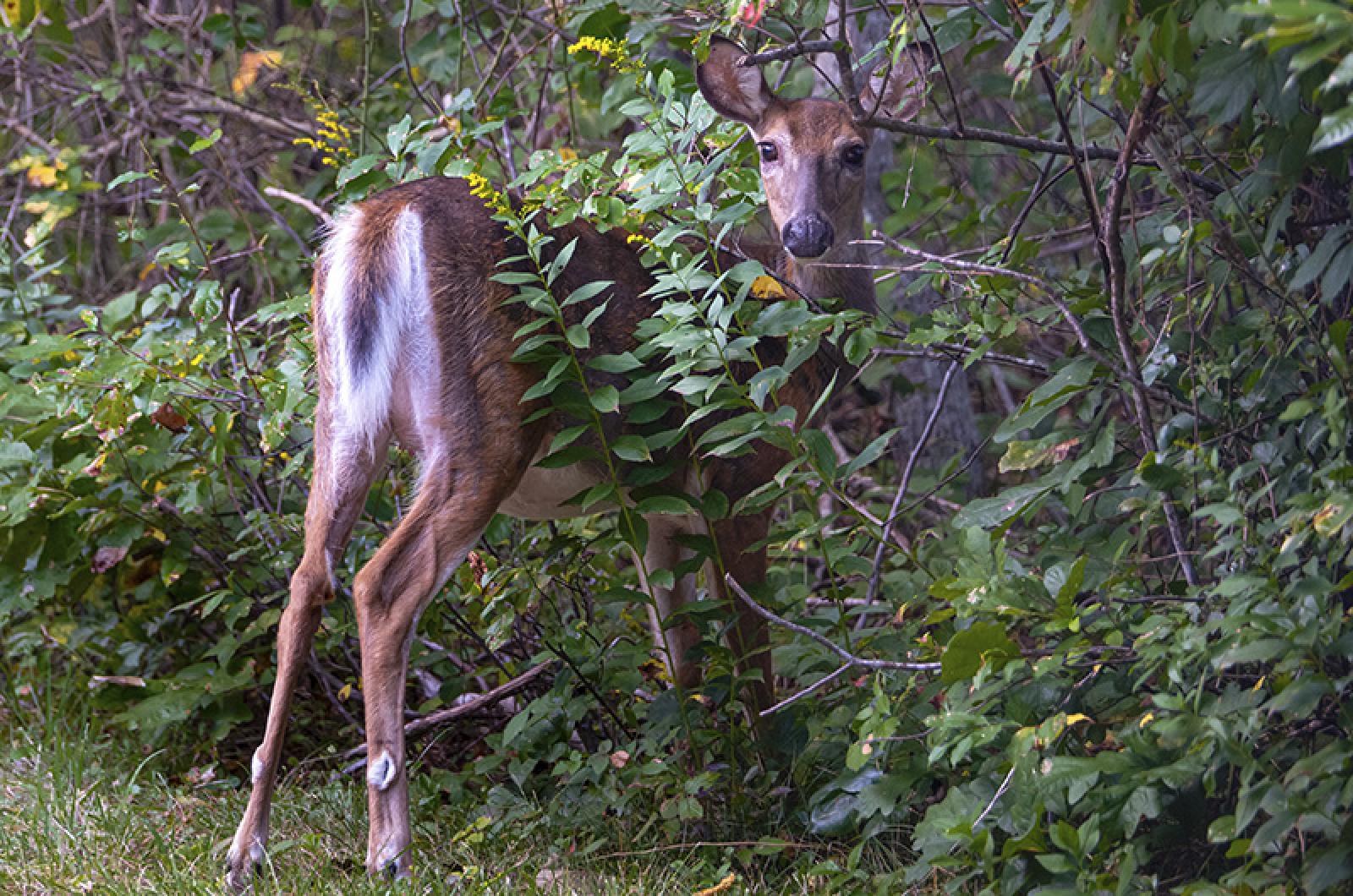As part of an ongoing effort to reduce the incidence of tick-borne illness, bow hunters on Martha’s Vineyard this year will be offered a monetary incentive to take additional female deer.
In the new initiative, archery hunters will be paid $100 apiece for every doe they take after the first two, said Richard Johnson, the biologist who heads the Islandwide tick-borne illness reduction program.
Funding will be provided by an anonymous donor, Mr. Johnson said.
The new program is a collaboration involving Island Grown Initiative, the Martha’s Vineyard Agricultural Society, and the tick-borne illness reduction program that began some years ago through the Island boards of health and is now administered through the county.
IGI executive director Rebecca Haag said last week that the Agricultural Society is in the process of retrofitting a trailer for use as cool storage to hang deer. As part of its food-equity mission, she said IGI will process the donated deer, using the services of Jefferson Munroe at the Larder in Vineyard Haven. The meat will be distributed through the Island Food Pantry, church-led community suppers and other charitable outlets that provide free, nutritious food for Islanders.
“This is a true partnership — a three-way program between the Ag Society, MV ticks and IGI,” Ms. Haag said. “The goal is to reduce the herd and at the same time support local hunters so they can produce more food for Islanders and their families, and for people who need protein.”
The $100-per-deer incentive program is restricted to bow hunting, which on the Vineyard begins Oct. 7 and runs to Nov. 30, and primitive firearms season, which runs from Dec. 16-31. Shotgun hunters, whose season runs from Dec. 2-14, will not be included. (Archery hunting is allowed throughout the deer season, although few bow hunters go out during shotgun weeks).
Increasing the take of female deer is aimed at reducing the overall deer population, said Mr. Johnson, who explained that does typically have one fawn the first year and twins after that.
In Massachusetts, hunters are restricted to two bucks (antlered deer), but there is no limit to the number of does (antlerless deer) that hunters can take.
The Island deer population is known to be well above the statewide management goal of 6 to 18 deer per square mile. Deer play a key role in the life cycle of ticks, playing host to ticks during their reproductive cycles. Tick-borne illnesses have become a growing public health threat on the Vineyard.
Intensive education to raise awareness about ticks, including prevention measures and yard sweeps, and incentives to increase the deer take have been under way for about two years. Private property owners are being encouraged to open their land to hunting, and IGI began processing donated deer last year.
Now the program will take another leap with the installation of the community cold storage space for hanging deer, and the financial incentive for bow hunters. Mr, Johnson said the money being offered to hunters is intended to offset any other small loss of income they may incur, for example by leaving work early to hunt. The cold storage and processing is a further incentive for hunters to take more deer and donate them, he and Ms. Haag both said.
Mr. Johnson cited numbers compiled by the state that show the incentives appear to be making a dent.
Between 2005 and 2015 the average number of deer taken annually by hunters on Martha’s Vineyard was 624.
In 2016, the first year incentives began on the Island to encourage more deer harvest, the number rose to 764. In 2017 there were 844 deer taken. Last year the number was 900.
“The trend is upward,” Mr. Johnson said. He said an ideal goal would be to take 600 female deer annually.
“If we hit that number I’d be really pleased,” he said.
Mr. Johnson, who plans to eventually retire, said the Island would do well in the near future to hire a specially trained biologist who could lead more detailed study of the deer population. Sophisticated herd counts and other metrics are needed to better grasp the magnitude of the problem, he said.
Meanwhile, he expressed gratitude to the anonymous donor, who has offered to contribute up to $45,000 to boost the public health initiative.
“Someone has come forward and said, let’s do something, and we have them to thank,” he said.







Comments (43)
Comments
Comment policy »